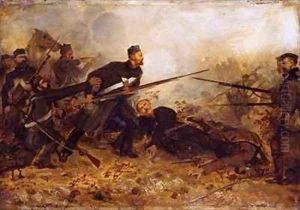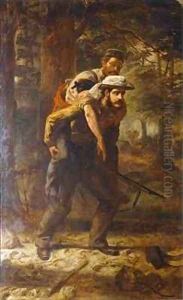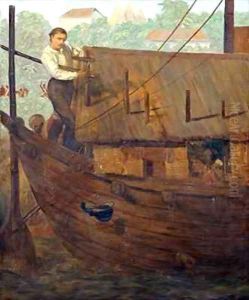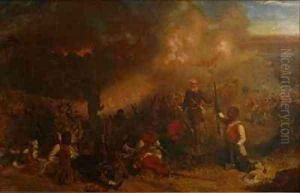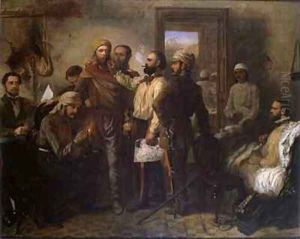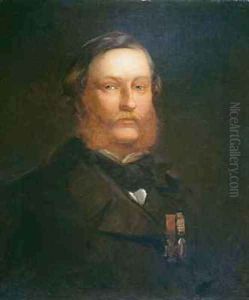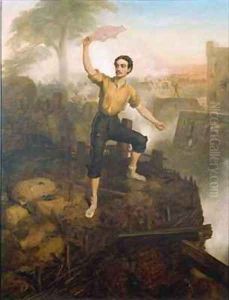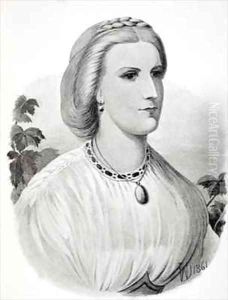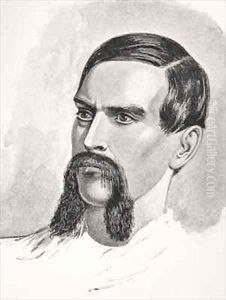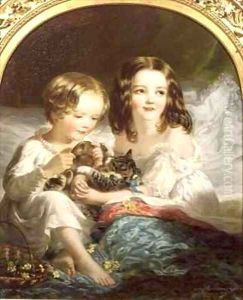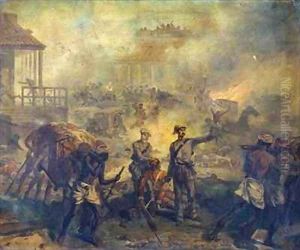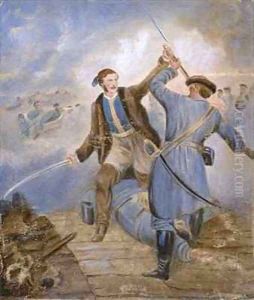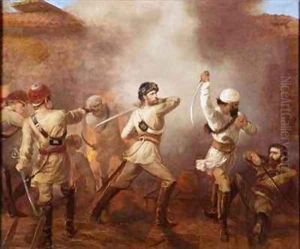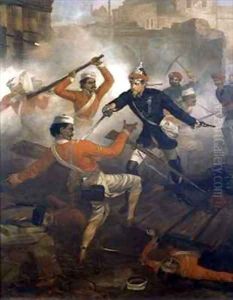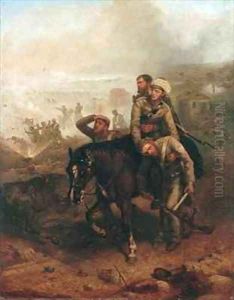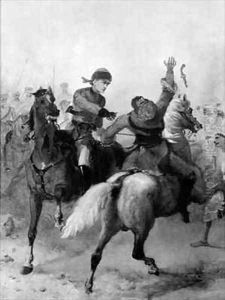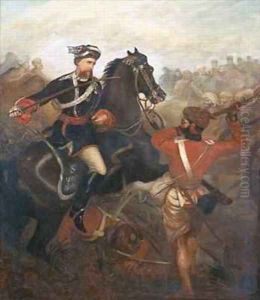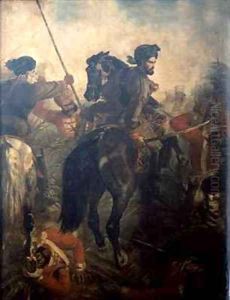Chevalier Louis-William Desanges Paintings
Louis-William Desanges, also known as Chevalier Louis-William Desanges, was a British painter born in 1822, primarily recognized for his portrait works. Desanges was of Huguenot descent and enjoyed moderate success in his lifetime as an artist, particularly for painting portraits of notable military figures and scenes of battle.
Desanges studied art at the Royal Academy Schools in London, where he honed his skills and developed a keen interest in portraiture. His early career was marked by the patronage of affluent clients who commissioned him to create portraits that would often be hung in family estates or public institutions.
In the 1850s and 1860s, Desanges became particularly known for his 'Crimean Heroes' series, which depicted British soldiers who had been awarded the Victoria Cross during the Crimean War. This series was exhibited in London and earned him significant recognition and accolades, enhancing his reputation as a portrait artist with a particular interest in military subjects.
Despite his focus on portraiture, Desanges also produced a number of history paintings and religious works, although these were not as well received as his portraits. His style was typical of the mid-19th century British painting, characterized by a realistic approach to the depiction of figures and attention to detail, particularly in the rendering of military uniforms and regalia.
Throughout his career, Desanges exhibited at the Royal Academy and other prominent venues, contributing to the cultural landscape of Victorian England. He was awarded the title of 'Chevalier' by the French government, a mark of recognition for his contributions to art.
Desanges' work is now part of several collections, including the National Portrait Gallery in London. He died in 1887, leaving behind a legacy as a painter who captured the likenesses and valor of military heroes of his time.
